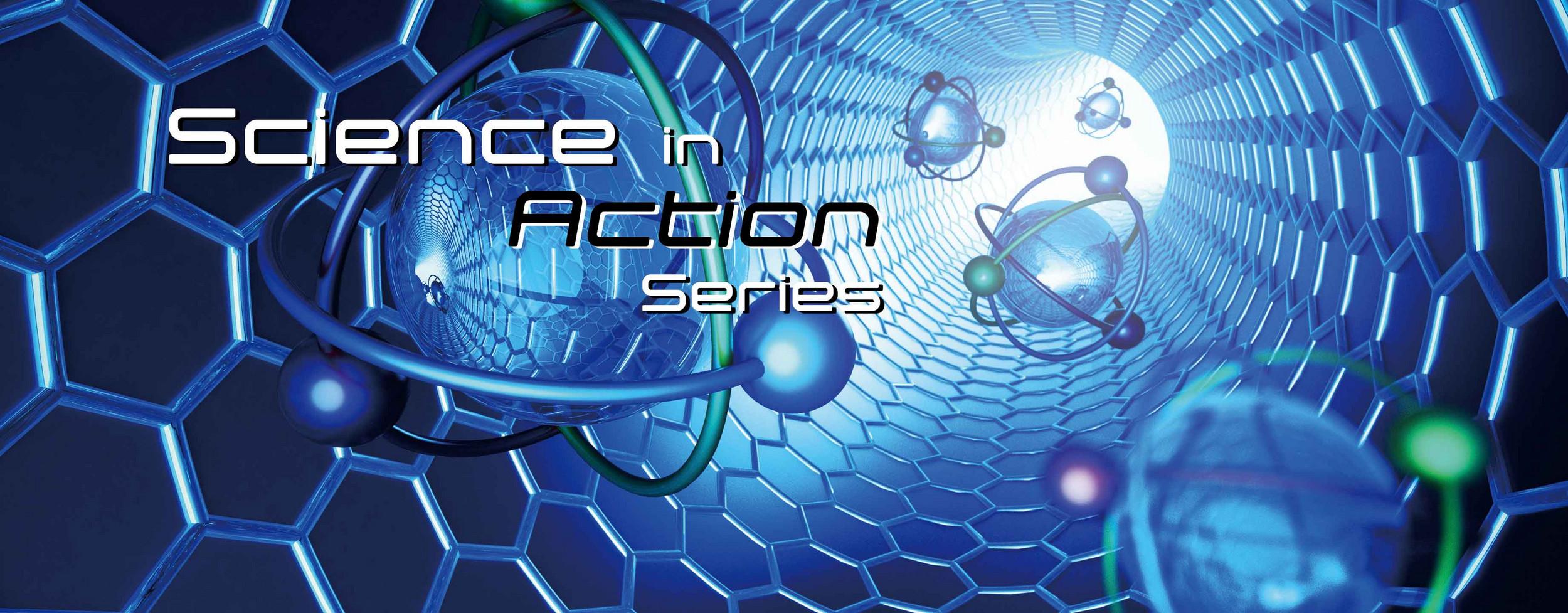
Prof. Andy Baker
For up to seven hours each day this past July, 17 students and teachers trekked on and off trails and into caves during a rugged, multiday expedition outside of Sydney, Australia. The trip included three hours of freeway and dirt-road driving. Their destination was the Wombeyan Caves, a part of Australia’s National Parks and Wildlife Service.
Their mission was to find missing carbon.
The class was led by Professor Andy Baker, Ph.D., Director of Research for the School of Biological, Earth and Environmental Sciences at the University of New South Wales in Sydney, Australia. He teaches environmental geoscience.
“Everyone is probably aware that human carbon dioxide emissions and land use changes have disturbed the natural carbon cycle,” Baker said. “This has led to rising atmospheric carbon dioxide levels and associated climate change.”
However, not all carbon accumulates in the atmosphere, with carbon sequestration occurring in the oceans and terrestrial biosphere, according to Baker. His research helps to tackle a fundamental problem, which is that the global carbon budget does not balance. Researchers have focused on the terrestrial system to identify the missing carbon, such as in rivers and glaciers. Baker’s group is focusing on groundwater. To date, there has been no assessment of the contribution of organic matter in groundwater to the global terrestrial carbon budget.
Twelve undergraduates and two postgraduate students were led by three researchers from the University. Baker was joined by academic and research staff, including Associate Professor Bryce Kelly, Ph.D., and post-doctoral researcher Helen Rutlidge, Ph.D. Rutlidge taught the class and led the fluorescence projects for the field class.
Dissolved organic carbon has a fundamentally important role in ecology, according to Baker. Removing dissolved organic matter from water and waste waters is of engineering interest.
“And from my cave science background, dissolved organic matter is transported from the soil to the cave and is preserved in stalagmites. So there is a cave science interest too,” he said.
Rutlidge helped the students design projects that directly related to the team’s research questions. She taught them about the processes that can transform dissolved organic matter, such as biological degradation and photodegradation, and asked them to work out which was more important for different water types.
Students collected samples from a river, a surface water pool, a subsurface cave stream, and a groundwater bore. To understand how fast sunlight breaks down organic matter, they left samples in the sunlight, removing one each day, measuring the dissolved organic matter’s fluorescence and absorbance. They could then work out a degradation rate. They also took some samples, filtered them, placed them in a dark and warm location, and measured the changes in fluorescence and absorbance due to biological degradation.
To make those measurements, the team brought along a HORIBA Scientific Aqualog, a spectrometer that measures fluorescence and absorption simultaneously, in a matter of moments. Baker uses the Aqualog as one of the ways to characterize groundwater dissolved organic matter.
“Over the last few years, we will have trained over a hundred students using the Aqualog,” Baker said.
The study of organic matter is key to identifying those carbon molecules.
使用Aqualog在旺比恩洞中进行测试
“Organic matter is the base of the food web, so understanding its character and concentration, and how that changes with environmental processes, is of fundamental ecological importance,” Baker said. “And organic matter is present in our potable water supplies - reservoirs, rivers, lakes and groundwater - and water treatment processes aim to remove as much as possible, as it can react with disinfection products or lead to biofilm growth.”
The Aqualog, Baker said, is the team’s “go-to” instrument for rapid characterization of dissolved organic matter using fluorescence and absorbance spectroscopy, both for teaching and research.
“The speed of fluorescence analyses means that we can collect experimental data at close to real-time, which is exceptionally useful on a field class,” he said. “It is also great that we can pack it into a Pelican case and drive it wherever we want, including remote cabins in national parks. For research, it has proven invaluable, especially when we are in the method development stage and can collect data rapidly to help refine methods.”
Baker is a scientist at heart. His pursuits have led him to other areas.
“I have been lucky to be able to pursue diverse research interests,” he said. “One area is cave science, where I use cave stalagmites to reconstruct past environments. It’s because of this that I like to take the environmental geophysics students to cave and karst sites – limestone terrain usually characterized by rocky ground, caves and sinkholes, underground rivers, and the absence of surface streams and lakes.”
“The second is characterizing organic matter in natural and engineered environments, and this where I have used fluorescence spectroscopy in my research career. Currently, we are funded by the Australian Research Council to investigate dissolved organic matter in groundwater and find out why there is so little organic carbon in groundwater. Where does it go? We are using the Aqualog as one of the ways to characterize groundwater dissolved organic matter.”

Máte nějaké dotazy nebo požadavky? Pomocí tohoto formuláře kontaktujte naše specialisty.